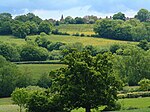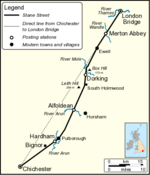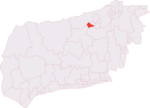Slinfold Stream and Quarry
English Site of Special Scientific Interest stubsGeological Conservation Review sitesSites of Special Scientific Interest in West Sussex

Slinfold Stream and Quarry is a 2.3-hectare (5.7-acre) geological Site of Special Scientific Interest west of Horsham in West Sussex. It is a Geological Conservation Review site.This site exposes the Horsham Stone member of the Lower Weald Clay, dating to the Early Cretaceous, around 130 million years ago. It preserves the fossils of horsetails in their upright position, suggesting that they grew in a fresh water reedswamp with a maximum depth of 2 metres (2.2 yards).A public footpath goes through a small stretch of the stream bank but the rest of the site is private land with no public access.
Excerpt from the Wikipedia article Slinfold Stream and Quarry (License: CC BY-SA 3.0, Authors, Images).Slinfold Stream and Quarry
Lyons Road,
Geographical coordinates (GPS) Address Nearby Places Show on map
Geographical coordinates (GPS)
| Latitude | Longitude |
|---|---|
| N 51.073 ° | E -0.396 ° |
Address
Lyons Road
RH13 0QP
England, United Kingdom
Open on Google Maps









